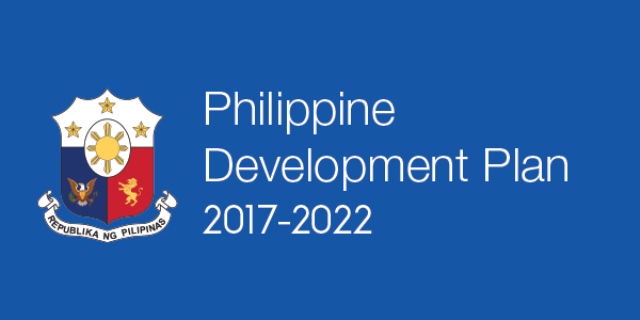
The market with PDP 2017-2022
Philippine Daily Inquirer
12:27 AM June 13, 2017
http://business.inquirer.net/
The Philippine Development Plan (PDP) 2017-2022 is the present administration’s first medium-term plan anchored on a long-term vision for the country. It targets a 7- to 8-percent annual gross domestic product (GDP) growth. It renders growth to be more inclusive, as “overall poverty rate is targeted to decline from 21.6 percent to 14 percent, and poverty incidence in rural areas is to decrease from 30 percent in 2015 to 20 percent in 2022.” Unemployment rate is also targeted to go down to 3 to 5 percent from the present 5.5 percent.
Underneath these three development fundamentals are four strategic objectives, namely: attaining just and lasting peace, ensuring security, public order and safety, accelerating strategic infrastructure development, and ensuring ecological integrity and a clean and healthy environment.
In summary, PDP 2017-2022 is the government’s ambitious high growth and inclusive economic program with an unprecedented or record spending agenda on infrastructure, human capital and social protection for the poor and other vulnerable sectors.
Bottom line spin
The CTRP, while not popular with the public at the moment, is said to be crucial in the development plan. It will raise the additional revenues needed to support the spending and investments program. It will also transform the Philippine tax system, found outdated and out of sync with our Asean (Association of Southeast Asian Nations) neighbors, into a simpler, fairer and more efficient system.
The House of Representative just approved its version of the CTRP under House Bill No. 5636, with the acronym TRAIN. TRAIN will slash personal income tax rates and will impose uniform estate and donors’ tax rates. To cover the consequent revenue losses, it will raise excise tax rates on fuel and cars, excise levy on sugar-sweetened drinks, and broaden the Value Added Tax (VAT) base.
TRAIN is expected to bring down the country’s debt-to GDP ratio to 36.7 percent in 2022 from 42.2 percent in 2016. It is “expected to reduce poverty rate from 21.6 percent in 2015 to 14 percent in 2022, lifting some six million Filipinos out of poverty, and helping the country achieve upper middle-income country status where per capita gross national income increases from $3,500 in 2015 to at least $4,100 by 2022.”
From P133.8 billion in the first year of implementation, TRAIN will yield P233.6 billion in 2019, P272.9 billion in 2020, P253 billion in 2021 and 269.9 billion in 2022.
In comparison, the Senate version under Senate Bill No. 1408 will yield a bigger P1.344 trillion in the same five years, distributed as follows: P169.1 billion in 2018, P262.5 billion in 2019, P305.8 billion in 2020, P290.1 billion in 2021 and P316.6 billion in 2022.
Several international financial and investments houses have given favorable remarks about the government’s plan and Congress’ efforts to support it. Fitch Ratings found the TRAIN “feasible.” Moody’s Investors Service described it as “credit-positive.”
With the above reactions and comments, some rewarding stock plays in the market may soon be happening. Stay tuned.









